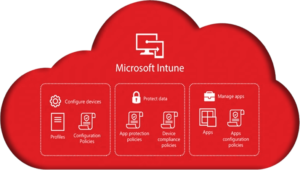Migrating data from third-party cloud storage platforms like Google, Box, Dropbox, or legacy file systems to Microsoft 365 is a major step in modernizing your organization’s digital infrastructure. But once the data is in its new home, ensuring it’s properly classified and protected becomes essential. Microsoft Purview Information Protection offers a powerful solution: auto-labeling policies that automatically classify and protect files based on their content.
In this blog, we’ll walk through how to configure an auto-labeling policy in Microsoft Purview to secure migrated files and highlight the key benefits of this approach.
Why Auto-Labeling Matters After Migration
Manual classification of sensitive data is inefficient and error-prone, especially when dealing with large volumes of legacy content. Auto-labeling ensures that files containing sensitive information—such as financial records, personal identifiers, or health data—are consistently and accurately tagged with the appropriate sensitivity labels. This helps maintain compliance and reduces the risk of data exposure.
Setting Up an Auto-Labeling Policy in Microsoft Purview
1. Define the Scope and Label
In the Microsoft Purview compliance portal, go to Information Protection > Auto-labeling policies and create a new policy. Choose the sensitivity label you want to apply (e.g., “Confidential”) and give the policy a clear name like “Auto-label Migrated Files.”
Select the locations to scan (SharePoint and/or OneDrive) where your migrated files now reside. You can target all sites or specific ones, such as a dedicated migration site collection.
2. Set Conditions Using Sensitive Information Types (SITs)
Define the content triggers for labeling using built-in Sensitive Information Types. Common examples include:
- Credit Card Number
- U.S. Social Security Number
- Bank Account Number
- Passport Number
3. Exclude Newly Created Files
To focus labeling on legacy content only, consider these strategies:
- Metadata Filtering: If migrated files were created by a specific account (e.g., a migration admin), use that as a condition.
- Folder Targeting: If files were placed in a specific folder or site during migration, scope the policy accordingly.
- Timing: Run the policy immediately after migration to minimize overlap with newly created files.
While Purview doesn’t natively support date-based conditions for sensitivity labels, these workarounds can help approximate the desired behavior.
4. Test with Simulation Mode
Before activating the policy, run it in Simulation mode. This allows you to preview which files would be labeled without making changes. Use this step to fine-tune your conditions, reduce false positives, and ensure the policy scope is appropriate.
5. Activate and Monitor
Once satisfied with the simulation results, activate the policy. It will begin labeling matching content automatically. Use Purview’s Content Explorer to verify label application and monitor progress.
6. Remove the Policy After Completion
Once the policy has finished labeling the intended content, it’s a best practice to remove or disable it. Leaving it active could result in unintended labeling of new files that were not part of the original migration scope.
Benefits of Using Auto-Labeling Policies
Implementing auto-labeling for migrated files offers several strategic advantages:
- Comprehensive Coverage: Ensures no sensitive file is overlooked, even in massive datasets.
- Consistency and Accuracy: Applies labels based on defined rules, eliminating user subjectivity.
- Reduced User Burden: Frees users from manually classifying legacy content.
- Policy Enforcement: Enables downstream policies like DLP to act on labeled data.
- Auditability: Provides visibility into where sensitive data resides
- Scalability: Handles labeling at enterprise scale—thousands of files per day.
- Seamless Integration: Works with other Purview features like retention, insider risk, and compliance analytics.
Final Thoughts
Auto-labeling in Microsoft Purview is a critical step in securing your organization’s data after a cloud migration. By automating the classification of sensitive content, you not only protect your legacy data but also lay the groundwork for a robust, scalable information protection strategy. Just remember to disable or remove the policy once it has served its purpose to avoid unintended consequences.
Disclaimer
All content provided on this blog is for information purposes only. Windows Management Experts, Inc. makes no representation as to the accuracy or completeness of any information on this site. Windows Management Experts, Inc. will not be liable for any errors or omissions in this information nor for the availability of this information. It is highly recommended that you consult one of our technical consultants, should you need any further assistance.
Windows Management Experts
Now a Microsoft Solutions Partner for:
✓ Data & AI
✓ Digital and App Innovation
✓ Infrastructure
✓ Security
The Solutions Partner badge highlights WME’s excellence and commitment. Microsoft’s thorough evaluation ensures we’re skilled, deliver successful projects, and prioritize security over everything. This positions WME in a global tech community, ready to innovate on the cloud for your evolving business needs.
Contact us: sales@winmgmtexperts.com






